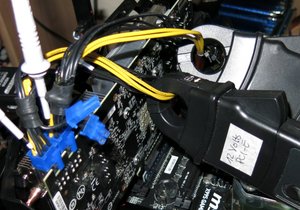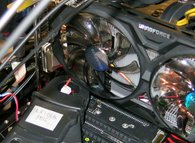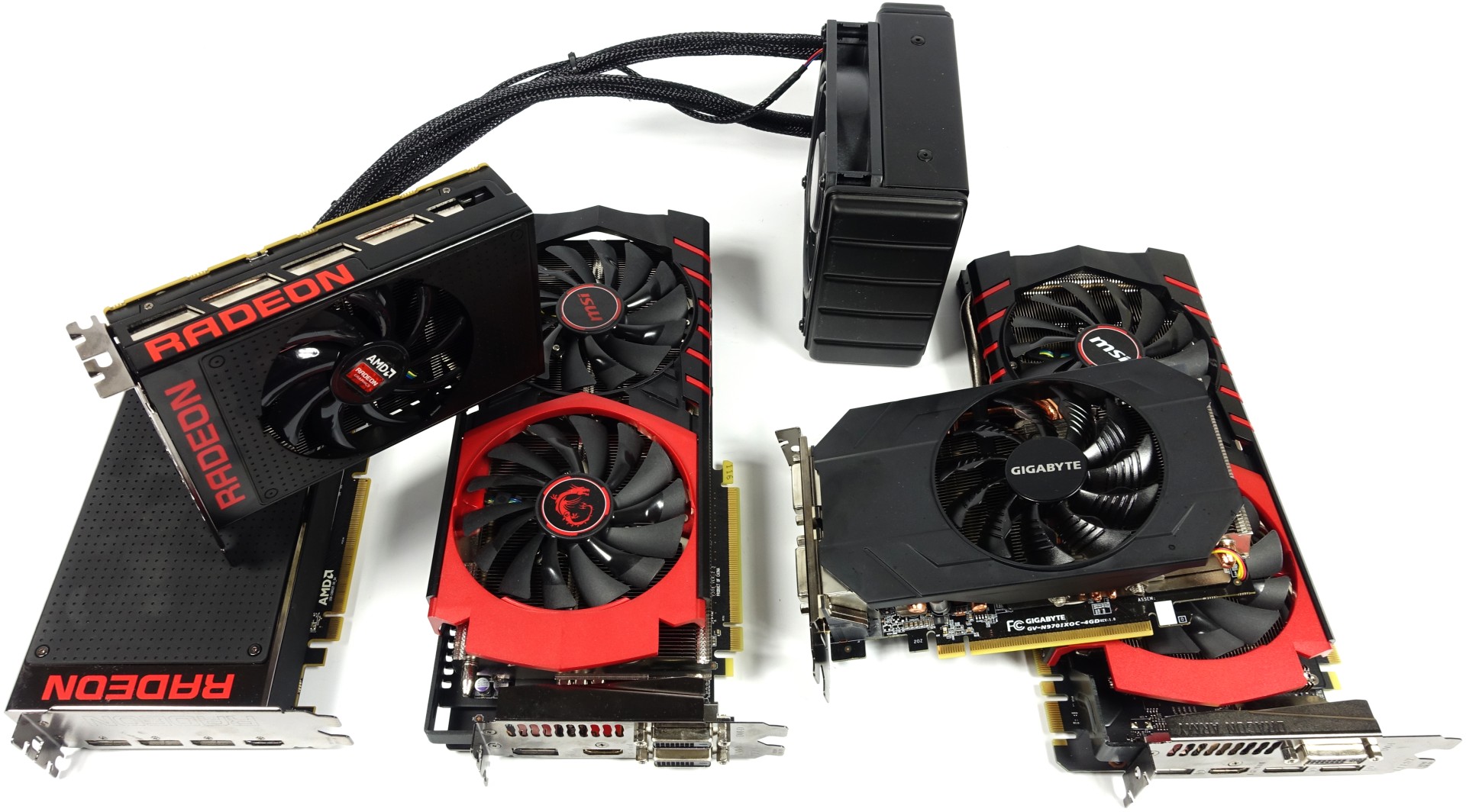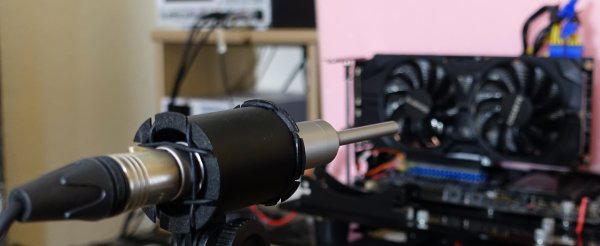AMD Radeon R9 Nano Review
Small, fast and pricey — that’s how AMD wants to establish a whole new product category. But does the Radeon R9 Nano have the performance to back up its price tag?
How We Tested
Test System
Since the specifications of our 4.2GHz Intel Core i7-5930K-based test system haven’t changed, the following table is just an overview. The only notable change is our update from Windows 8.1 to Windows 10, keeping us current and enabling the adoption of DirectX 12.
| Test Method | Contact-free DC Measurement at PCIe Slot (Using a Riser Card) Contact-free DC Measurement at External Auxiliary Power Supply Cable Direct Voltage Measurement at Power Supply Real-Time Infrared Monitoring and Recording |
|---|---|
| Test Equipment | 2 x HAMEG HMO 3054, 500MHz Digital Multi-channel Oscilloscope with Storage Function 4 x HAMEG HZO50 Current Probe (1mA - 30A, 100kHz, DC) 4 x HAMEG HZ355 (10:1 Probes, 500MHz) 1 x HAMEG HMC 8012 Digital Multimeter with Storage Function 1 x Optris PI450 80Hz Infrared Camera + PI Connect |
| Test System | Intel Core i7-5930K @ 4.2GHzRaijintek Triton All-In-One Water CoolerCrucial Ballistix Sport, 4x 4GB DDR4-2400MSI X99S XPower AC2x Crucial MX200, 500GB SSD (System, Applications and Data, Storage)be quiet! Dark Power Pro, 850W Power Supply Unit (PSU)Windows 10 Pro (Completely Updated) |
| Drivers | AMD: 15.201.1102-150806a-188638C Pre-WHQLNvidia: ForceWare 355.82 |
| Gaming Benchmarks | The Witcher 3: Wild Hunt Grand Theft Auto V (GTA V)Metro Last LightBioshock InfiniteTomb RaiderBattlefield 4Middle Earth: Shadow of MordorThiefAshes of the Singularity |
Comparison of the Tested Graphics Cards
AMD’s Radeon R9 Fury X is set as the top of the field to allow for a direct comparison to the new Nano. A factory-overclocked MSI GeForce GTX 980 Gaming 4G should have approximately the same performance level as the Nano across the benchmarks and resolutions. Next, MSI's R9 390X Gaming 8G is expected to provide similar performance as well, and it sports 8GB of memory, which is the largest amount in this test line-up.
Finally, we round out the field with a Gigabyte GTX 970 OC Mini. It actually competes twice, once at stock settings and once after being manually overlocked. Still, this smaller graphics card should be considered a step down in performance. Then again, it’s the fastest out there for mini-ITX.
Benchmark Settings and Resolutions
The benchmarks are set to taxing detail presets, since that's what we expect someone who buys a graphics card in this price range to do. In order to demonstrate differences between the cards at progressively higher resolutions, we’re using Full HD (1920x1080), QHD (2560x1440) and Ultra HD/4K (3840x2160).
QHD is a good compromise between the two other resolutions. We include it since even the Radeon R9 Nano isn’t always able to provide playable frame rates at 4K. In the end, most people would rather turn down their settings than endure choppy playback. The QHD results are a good indicator for this. By and large, QHD at high settings runs about the same as 4K with low settings.
Frame Rates and Frame Time Variance: What’s New?
We completely updated how we represent frame time variance. In the end, percentages just don’t tell the whole story for longer benchmarks, which can have very different sections when it comes to rendering speed. We’ve settled on two ways of representing the results. First, we show how long it takes to render each individual frame, which tells you a lot more than bar graphs or an FPS graph that’s based on averages. Second, we plot two different evaluations of each frame’s time.
We start by normalizing each frame time by subtracting the average of the overall benchmark’s frame times. This puts all the curves for all the graphics cards at a common average on the x-axis. This allows us to more easily spot outliers. After doing this, we assess the curve’s smoothness, which is to say that we’re looking at the relative differences in render time between the frames. This helps us to find subjectively annoying stuttering or jumps more easily without having the actual frame time influence the curve.
Get Tom's Hardware's best news and in-depth reviews, straight to your inbox.
Power Consumption Measurement Methodology
We measure the power consumption of these graphic cards as described in The Math Behind GPU Power Consumption And PSUs. It's the only way we can achieve readings that facilitate sound conclusions about efficiency. We need two oscilloscopes in a master-slave setup to be able to record all eight channels at the same time (4x Voltage, 4x Current). We measure each PCIe power connector separately.


We use a riser card on the PCIe slot (PEG) to measure power consumption directly on the motherboard for the 3.3 and 12V rails. The riser card was built specifically for this purpose.



Infrared Measurement with the Optris PI450
We’ve identified a method to confirm what our sensors tell us and to spice up our usual temperature graphs a bit in the form of the PI450 by Optris. This piece of equipment is an infrared camera that was developed specifically for process monitoring. It allows us to shoot both videos and still shots at a good resolution, providing us with not just the the peak temperatures, but also a good view of any weak points in the graphics card's design.
The Optris PI450 supplies real-time thermal images at a rate of 80Hz. The pictures are sent via USB to a separate system, where they can be recorded as video. The PI450’s thermal sensitivity is 40mK, making it ideal for assessing small gradients.
Noise
As always, we use a high-quality microphone placed perpendicular to the center of the graphics card at a distance of 50cm. The results are analyzed with Smaart 7.
The ambient noise when our readings were recorded at night never rose above 26 dB(A). This was noted and accounted for separately during each measurement. The setup was calibrated on a regular basis as well.

Igor Wallossek wrote a wide variety of hardware articles for Tom's Hardware, with a strong focus on technical analysis and in-depth reviews. His contributions have spanned a broad spectrum of PC components, including GPUs, CPUs, workstations, and PC builds. His insightful articles provide readers with detailed knowledge to make informed decisions in the ever-evolving tech landscape
-
Eximo Looks like the table had a hiccup. GTX970 (OC) is showing a lot of the numbers from the R9-390X, and maybe a few numbers from the 980 column.Reply -
-Fran- It is a nice card and I agree, but... It's not USD $650 nice.Reply
This card is a very tough sell for AMD, specially since ITX cases that can house current long cards are not hard to find or weird enough to make short cards a thing.
It's nice to see it's up there with the GTX970 in terms of efficiency, since HTPCs need that to be viable and the card has no apparent shortcomings from what I could read here.
All in all, it needs to drop a bit in price. It's not "650 nice", but making it "~500 nice" sounds way better. Specially when the 970 mini is at 400.
Cheers! -
sna no HDMI2.0 in itx small system near the 4k TV is unforgivable AMD , what were you thinking?Reply -
sna Reply16605176 said:It is a nice card and I agree, but... It's not USD $650 nice.
This card is a very tough sell for AMD, specially since ITX cases that can house current long cards are not hard to find or weird enough to make short cards a thing.
It's nice to see it's up there with the GTX970 in terms of efficiency, since HTPCs need that to be viable and the card has no apparent shortcomings from what I could read here.
All in all, it needs to drop a bit in price. It's not "650 nice", but making it "~500 nice" sounds way better. Specially when the 970 mini is at 400.
Cheers!
well this card is for the smallest case ... not the easy to find huge long itx case.
I personaly find long itx cases useless ... they are very near to Matx case in size .. and people will pick up MATX ovet ITX any time if the size is the same.
BUT for 170mm long card ? this is a winner.
the only thing killing this product is the lack of HDMI2.0 which is very important for itx .. ITX are the console like PC near the tv.
-
heffeque Replyno HDMI2.0 in itx small system near the 4k TV is unforgivable AMD , what were you thinking?
I guess that they were thinking about DisplayPort? -
Nossy I'd go with the 950 GTX for a mini ITX build for a 1080pgaming/4k video HTPC.Reply
For a $650 bucks video card. I'd go with a 980TI and use a Raven RVZ01 if I want an ITX build with performance.



